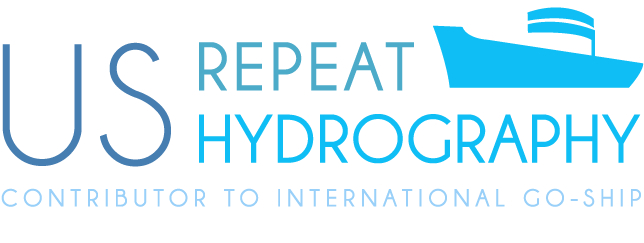
09 January 2017
We are now one week into Leg 2 of GO-SHIP P18 2016/17. About half of the scientific staff have changed hands. Sarah Purkey and I thank Brendan Carter and Annie Bourbonnais for remaining aboard to ease our transition, and in particular for leaving us with a crew of scientists in excellent spirits. Weather must’ve been great. One person who is sorely missed is Andy Stefanick, Jedi Master of the CTD and salt analysis, who returned home from Easter Island with a sprained ankle.
After a bit of back and forth, including a visit to the Hanga Roa Harbormaster with our Chilean observer and translator, we did not gain clearance to conduct operations within the Chilean EEZ near Easter Island. Also, our departure date from Easter Island was delayed by two days – one awaiting a 3rd engineer filling in for a badly injured crewman, and a second day awaiting a new motor for the ship’s incinerator. Basics before science. During the wait, Sarah, Jay Hooper and Kristy McTaggart brainstormed a worksharing arrangement to cover, at least partially, the myriad of responsibilities handled by Andy Stefanick.
We departed mid-morning the 30th of December, Destination: P18 station 116, located at 23° 54’ North, 103° West, adjusted six miles north from its planned location to stay well clear of the Chilean EEZ about Easter Island and Sala Y Gomez. We occupied 116 at 7 pm local time – concurrent with the ship’s new year’s eve party in the library. Happy New Year, we’re underway.
To stay clear of the EEZ, and occupy a more or less meridional line, we proceeded to the Southwest to station 117 at 24° 30’S, 102° 20’W, and stations 118 through 124 from 25° to 28° S along the 101° 30’ W meridian, a line as close to tangent the EEZ as comfortable. We returned to the 103° W line via stations 125 at 28° 30’S, 102° 20’W and the slightly adjusted station 126 at 29° 6’S, 103° W.
These stations were occupied without incident, and we continued as planned (half degree spacings) along 103° W, making up time due to the favorable weather and seas. We had some issues on Jan. 4 at stations 129 and 130. Both conductivity sensors and all cabling on the lower end cap were swapped out for a total delay, including aborted (then repeated) casts, of ~five hours, before we were back in business.
This delay was opportune for the ship’s engineers, who conducted yet another test of the aft winch. They had been troubleshooting this winch nigh-daily in Easter Island and, sadly, were frustrated again. We continue to operate with the forward winch and are rehearsing our timings and roles on deck with the tugger (for centering the CTD/rosette on the Brown’s sliding platform) to hasten our recoveries and assure safety in the seas to come. Thankfully, the forward winch is working flawlessly.
Our current station timings provide for half-degree spacings to 72° S, but with only just under four weather days’ cushion.
Depending on ice and weather conditions, an XCS section has been proposed from
103°W to Thurston Island (72°S, 101°36’W, so 24 mi. to the East), to capture boundary
flow from the East. To conserve fuel and
time, the XCS section will be conducted via small boat by Dr. Sonnerup and may,
at the discretion of the co-chief, be limited to one-way.
Welcome aboard to new scientists for Leg 2
Cathy Garcia (Genetics)
Yves Plancherel (3H-3He and Rare Earth Elements)
Bethany Kolody (iTag genetics)
Myself (Chief Sci.)
Sarah Purkey (Co-Chief Sci.)
Emma Pontes (O2)
Chris Langdon (O2)
Conrad Luecke (CTD watchstander)
Paige Logan (CTD watchstander)
Rachel McMahon (CFC/SF6 analysis)
Andrew Collins (dissolved inorganic carbon)
Charles Featherstone (dissolved inorganic carbon)
And a special welcome to our Chilean observer and sample cop/genetic sampler extraordinaire: Javiera Veloso, who is assisting our Genetics programs as part of the requirements for her undergraduate degree in marine biology at Valparaiso University.
For Leg 2 we have one new project aboard – iTag® - genetic fingerprinting of South Pacific water masses as part of Bethany Kolody’s pHD dissertation.
In all, during week one we transited to the 103° W Meridian, occupied 20 full-depth CTD stations, deployed four ARGO floats, two SOCCOM floats, and three drifters. The weather continues to be very nice with (mostly) calm seas so we’re keeping our fingers crossed for, ahem, a peaceful occupation of the 40s and 50s on the P18 line, and a full two-way section to Thurston Island.
As a follow up to Weekly Rept. #4, our primary concerns going forward are the weather, the continued viability of using the forward winch under adverse conditions, ice cover South of 68° S, and the limited zone within the Chilean EEZ where we do have clearance (Fig. 1). The zone permitted, part of earlier plans to occupy the P17E section, involves either a substantially longer transit into the Straits of Magellan, or conclusion of all underway measurements just beyond the Chilean EEZ.
 Figure 1. Map of the Chilean EEZ in the South Pacific Ocean. The grey rectangle near 53.5° is the region within the EEZ where we have clearance to conduct measurements.
Figure 1. Map of the Chilean EEZ in the South Pacific Ocean. The grey rectangle near 53.5° is the region within the EEZ where we have clearance to conduct measurements.Twitter.com/thesciencepaige